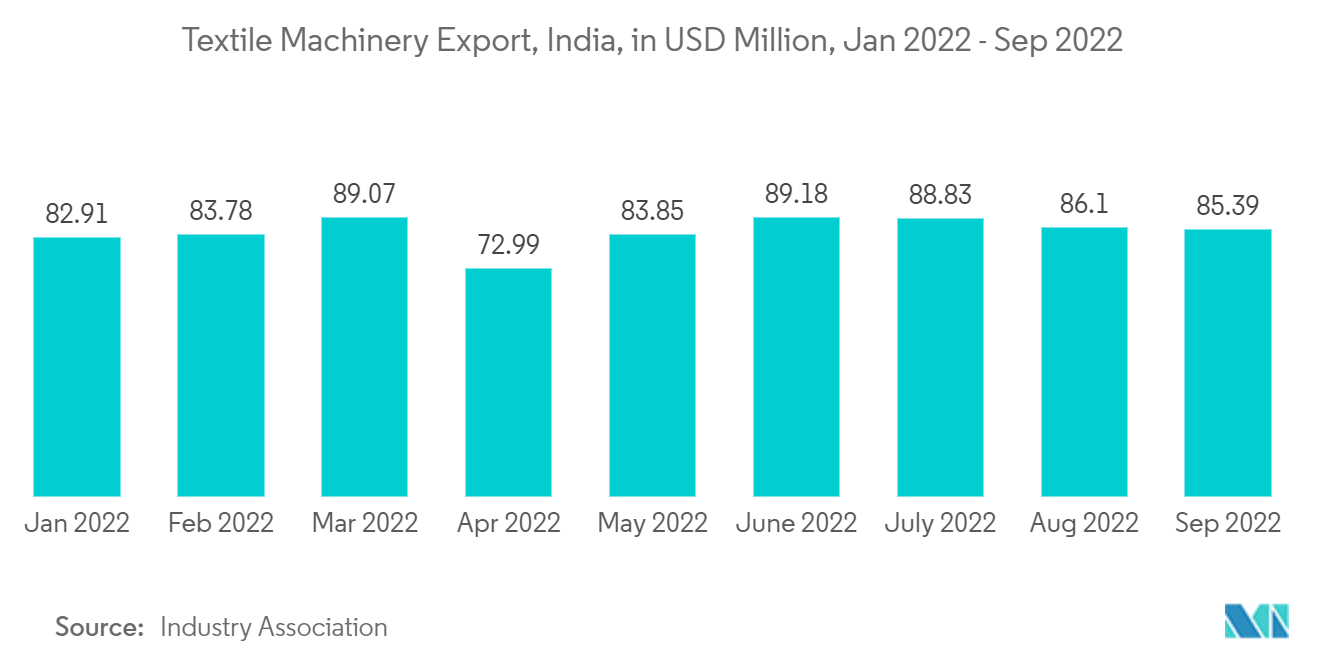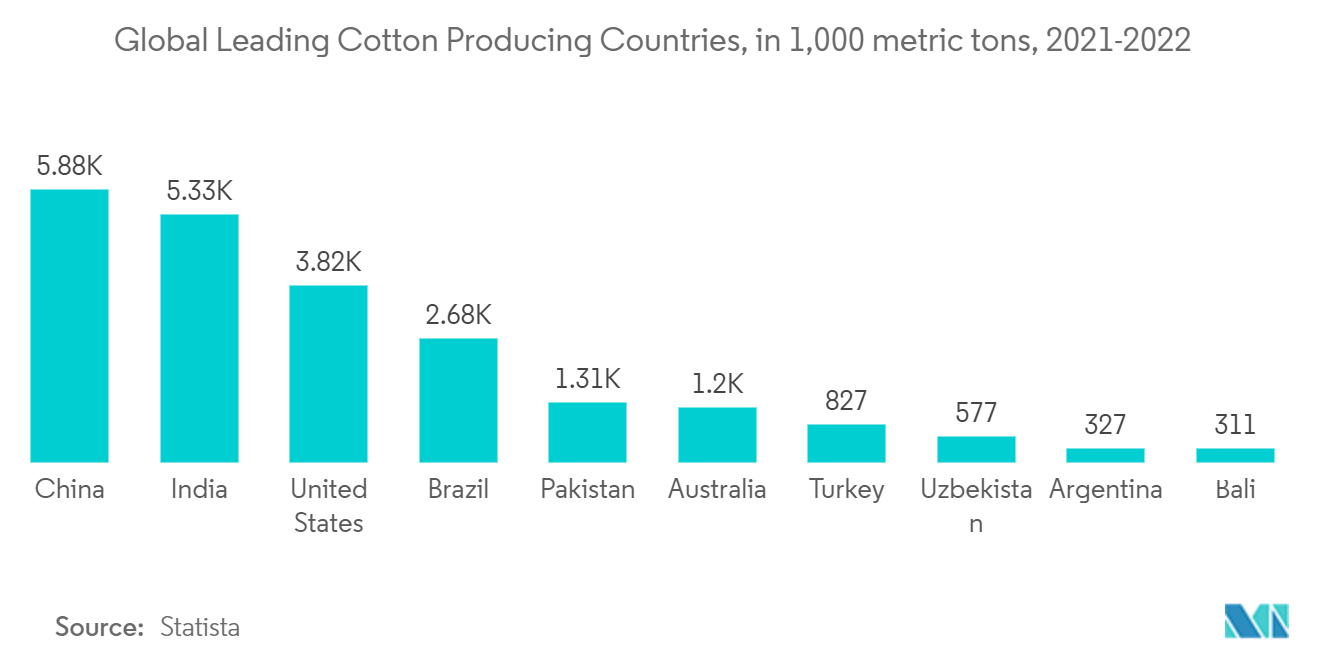Market Trends of Global Cotton Spinning Machinery Industry
This section covers the major market trends shaping the Cotton Spinning Machinery Market according to our research experts:
Increasing domestic demand for cotton fabric in Asia-Pacific driving the market
Cotton is the most commonly used natural fibre in the world, making it an important component of the textile industry. The total global cotton production in 2020/2021 was 112.39 million bales. India, China, and the United States were the world's largest producers, accounting for more than half of the total production volume. In 2021, the total global supply of cotton, including stocks, was estimated to be around 247.6 million bales. The United States was the leading cotton exporter in 2021, with approximately 16.35 million bales of cotton exported worldwide. As a result, the United States exported the vast majority of its harvests for processing elsewhere. Brazil, India, and Australia were also among the top exporters. China, Bangladesh, and Vietnam were among the top importers, all of which are well-known for their production of large quantities of cotton clothing.
China, India, and the United States are the top three cotton-producing countries. The Southern states have traditionally harvested the most cotton in the United States. This area was once known as the "Cotton Belt," because cotton was the most important cash crop from the 18th to the 20th centuries. Cotton production has declined due to soil depletion and social and economic changes, and agricultural land in this region are now primarily used for crops such as corn, soybeans, and wheat. This statistic depicts the top cotton-producing countries in the year 2021/2022. Cotton production in China that year was estimated to be around 5.88 million metric tons.
A near-doubling in benchmark cotton futures to 11-year highs, coupled with an increase in freight and fuel prices, is hammering Asian apparel makers, while global retail customers are hesitant to absorb the additional costs. Losses have piled up for Asia's garment manufacturers, who are among the region's largest employers, with some smaller units suspending operations, displacing thousands of workers, undermining the region's recovery from the pandemic and posing a new challenge for policymakers already dealing with high inflation. An uncertain outlook for European demand amid the Russia-Ukraine conflict has exacerbated the woes of apparel makers in Asia, which is home to the world's top garment exporters, China and Bangladesh.

Increasing Production of Cotton Textiles in Emerging Regions
Cotton production in India is expected to reach 7.2 million tonnes (43 million bales of 170 kg each) by 2030, owing to rising consumer demand. In FY22, India's textile and apparel exports (including handicrafts) totalled USD 44.4 billion, a 41% increase year on year. In FY22, readymade garment exports including cotton accessories totalled USD 6.19 billion. In comparison to major textile producers, India has a comparative advantage in terms of skilled labour and production costs. The textiles sector is dominated by the decentralised power looms/hosiery and knitting sector. The textile industry's close relationship with agriculture (for raw materials such as cotton) and the country's ancient textile culture and traditions make it unique in the world.
In 2023, the world's largest textile-producing countries and top textile exporters will continue to drive global textile industry growth, owing to rising production and sales of materials such as cotton, yarn, fibre, and other finished products or apparel. While China continues to be the world's largest textile producer and exporter, other major textile markets such as the EU, India, and the United States have shown impressive annual growth rates in recent years. The global textile industry is expected to grow in lockstep with the rapidly changing fashion markets around the world, implying that the world's largest textile-producing countries and top textile exporters still have plenty of room to grow during the forecast period.


